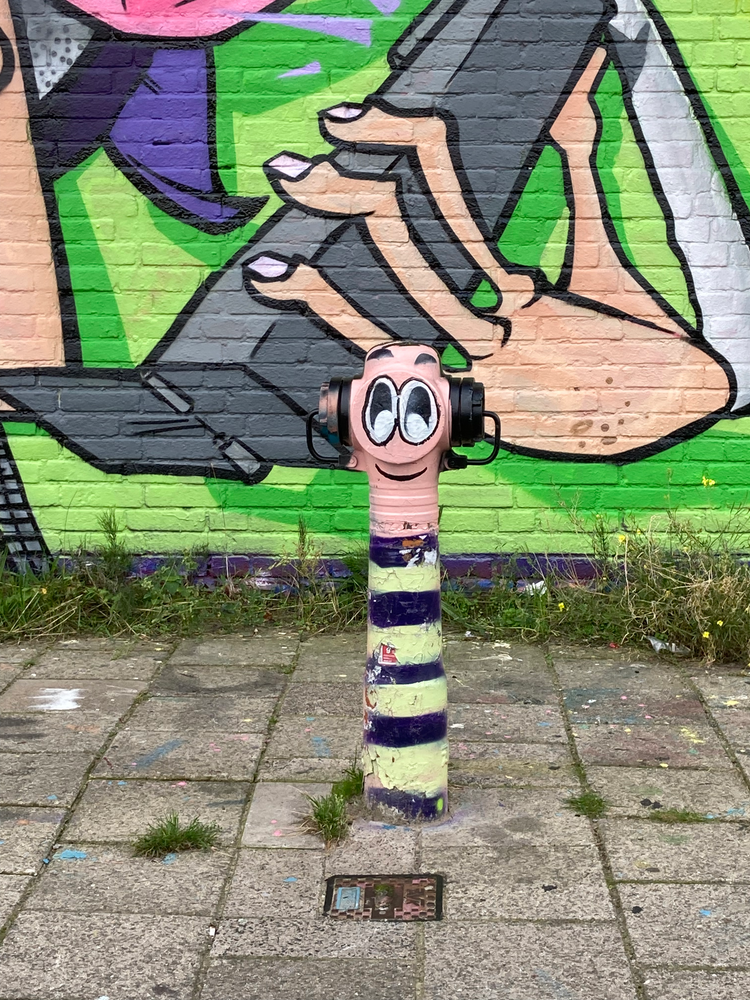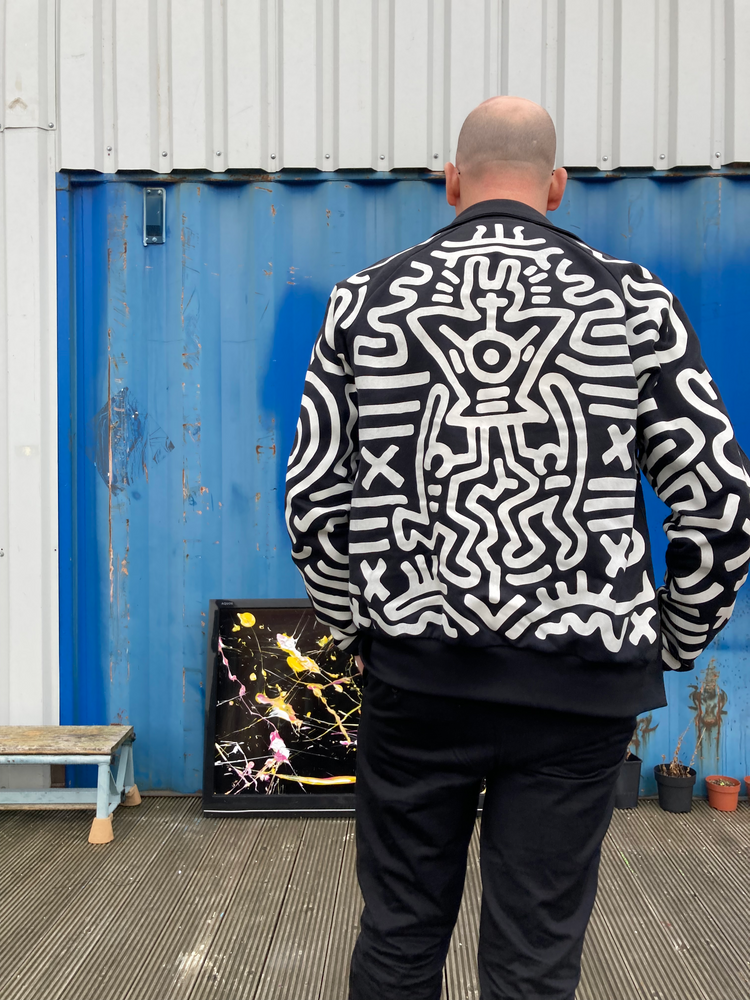JEROEN DISCH: TRUST THE PROCESS
Jeroen Disch has over 15+ years of experience in branding and digital design. He's worked for renowned agencies, has a deep love for typography, and is the driving force behind Halfvet, a bi-weekly newsletter about digital design and typography. A conversation about the need for play, boundaries and trust.
Disch attended the Art Academy before working as a graphic designer at LAVA design. Subsequently, he worked as art director and team lead at Edenspiekermann and GRRR. Currently, he’s the Design Director at Bravoure, a Dutch digital agency. He leads a team that mainly designs for the cultural sector, creating big digital platforms for music festivals and museums. In addition, he's a guest teacher at several colleges, co-founder of the Variable Font Course, and has a newsletter on digital design and typography. In short: he is one busy man, but thankfully found the time to sit with us and talk about the creative process.
You wanted to do the interview here at the NDSM; why is that? [NDSM is a former shipyard and up-and-coming neighbourhood in the northern part of Amsterdam - Ed]
JD: “Imperfection is essential to my work. Nothing is perfect here and that feels comfortable to me. In communication and design, you need imperfection. Our job as designers is to create memorable stuff. In order to be remembered, you want to stand out and be different from the competition. So imperfection, things that are a little weird or out of the norm, help to make something memorable.”

What is your definition of creativity?
JD: “Creativity has to do with knowledge - you need to know your stuff - and it has to do with imagination and reflection.
You need a couple of ingredients to foster creativity. The first one is play. Feeling free to play is essential when coming up with ideas, because when you play you're in a much more creative mood than when you're focusing on other things, like results. I allow my designers to experiment and fool around a bit.
You also need boundaries. If a brief or project is too vague or broad, it will not work. You also need to set boundaries in time and space. I usually advise my designers to go somewhere else: get out of the studio, go to a cafe to work or stay home and lock yourself up in a room where no one will disturb you. Also, give yourself a strict deadline. Decide what you will focus on that day and stick to that deadline. And don’t forget to allow time for reflection. We set aside time at the studio and then reflect on a project we’ve done.
Every creative person needs boundaries. As designers working with clients, we are trained to work within certain limits, but at the same time, we try to step out of that frame and find new combinations of existing elements. That’s where creativity comes in.”
“Feeling free to play is essential when coming up with ideas, because when you play you're in a much more creative mood.”


How do you apply creativity in the work you do?
JD: “There are different phases in the creative process. When working on a new project, you always start with research. You dive into the subject, collect all these ideas and images, and create a collection of knowledge and inspiration. And then you stop. The biggest enemy of creativity can sometimes be inspiration. That might feel counterintuitive, but my experience is that collecting inspiration for too long will block the creative process.
Once you’ve concluded your research, the really hard part comes: resisting the urge to start designing straightaway. It’s very tempting to start thinking about solutions, especially for designers, because that’s what we are trained to do, but it’s vital that you don’t.
The next phase is chewing on the material you have gathered. How do the different parts relate to one another? How can I combine stuff? What ideas can I work on? Chew on your material, then let it rest and do something completely different because that's the moment where your unconscious comes in. Things can take hours, days, and sometimes weeks to grow in your unconscious mind. But you will find that once you start working on the project again, ideas will pop up. And then it’s time for the final phase where you refine your ideas. Show it to others, improve on it, make it better.”
Could you elaborate on the unconscious? It feels elusive, something that you have little control over.
JD: “The unconscious part is really just a phase in the creative process. So first you collect stuff, then you chew on the material, and then it needs to go to your unconscious mind and sit there while you do something else. For example, a lot of people get the best ideas while cycling or taking a shower. In those moments, you are physically active, but your mind can wander. And that’s when ideas pop up. You don’t have to do anything for it; it just happens naturally.”


Isn’t there an inherent tension between allowing time for the creative process and running a studio that involves things clients and strict deadlines?
JD: “It’s a tough combination for sure. On the one hand, there's a deadline; on the other hand, you want to have the time to explore new ideas. There’s the certainty of the process and how it works, but there’s also this big unknown in that you don’t know what the end result will be. You just have to be confident that your process is correct.”
Has your view on creativity changed throughout your career?
JD: “When I look back at what I did 20 years ago, it's more or less the same as what I do now. My role changed, but what I do and the way I do it are still the same. However, my perspective has broadened with each new job. When you start out as a designer, you tend to work solo and are really focused on the project or client at hand. As a design lead, you open yourself up to more perspectives. You open up to clients by thinking with them instead of for them. You're much more open to your team as well and even to society at large.”
“I have this internal drive to do better, I think most creatives can relate to this.”


If what you do, in essence, is the same thing, how do you keep it from becoming repetitive?
JD “Challenging myself is not that hard because I'm never really satisfied with what I’ve done. I have this internal drive to do better, I think most creatives can relate to this, and so I see each project as a new opportunity to do better.
I also keep pushing myself to learn things. For instance, five years ago, I started the newsletter Halfvet, which is about digital design. It allows me to reflect on what I see and form an opinion. I always look for topics that interest me but that I don't know a lot about, so it's a way for me to learn about this topic."
You also work as a guest lecturer: any advice for the next generation of creatives?
JD: “As a student, I did a lot of different things, which really helped me find out what I'm good at. I studied graphic design but also worked with video and film. And that gave me a lot of different options. And if I could give one piece of advice to current students, it would be to take your time and not rush through it.
It’s nice when you can find one focus point, one thing that really interests you and own that. It can be a specific field of interest or a tool you master. Trying a lot of different things while also having one specialisation really helps you focus your career and be visible to others.
And finally, your career consists of phases, just like any creative process. So you start out as a student, get exposed to many different things, and work in other disciplines. And that’s good. Be inspired, try different things. It’s okay that in this phase of your career you don’t yet know what it’s all about. That will become apparent later. Trust the process.”


Comments